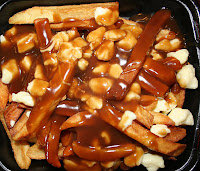This morning we flew to Biarritz, on the southwestern coast of France near the border with Spain. We're staying through Sunday and plan to drive around the Pays Basque a bit and visit San Sebastian (Spain) as well.
The hotel that we booked is right on the beachfront, providing a nice view from our room.
We spent most of the day walking along the beach and taking in the sights. I very much prefer sandy beaches like this to the rocky ones such as those that we visited last year along the Côte d'Azur.
Here's a view of the city looking back from the southern edge of the cove of the city's main beach.
We also visited the église Saint-Martin, a 12th century church that was restored in the 1500s. I particularly liked the blue and white mosaic floor.
Here's a photo of the Hôtel du Palais, a beachfront luxury hotel that was originally the Villa Eugénie -- a palace built for Napoleon III's wife given her love of the area.
***
We spent the afternoon at the hotel pool, which overlooks the beach. The pool itself was filled with saltwater -- a new experience for me. We also made a couple of trips down to the beach to go in the ocean. It was a bit cold but nonetheless very nice.
With each visit to a beach in France, I'm reminded of the cultural differences with respect to nudity. And it seems that the pro-nudists are always those you would prefer to have never seen naked (i.e., the elderly and those who aren't in the best of shape).
The nudity extended to the pool area as well and, unfortunately, the pro-nude crowd generally fit the same demographic as that on the beach.
***
One of the highlights of our first day in Biarritz was the fresh seafood. The langostine appetizer that we had with dinner definitely stood out.
***
During the walk back to the hotel we were greeted by a nice sunset. I wasn't quite able to catch it in time for the photo below, but the post-sunset still made for a nice picture.






























































